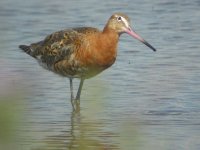DGRW
Well-known member
My apologies for what is probably a very old cherry but I've been battling for some time with what should obviously be a very simple problem to solve and every time that I think I've cracked it I find that I'm struggling again.
How to tell a Bar Tailed Godwit from a Black Tailed Godwit at distance?
Wing bar and definition of plumage are all very well and simple but I'm finding that at distance and especially on the ground; I'm still struggling to tell them apart if plumage on individual birds is not in good condition.
Any nice simple tips for a nice simple birder?
How to tell a Bar Tailed Godwit from a Black Tailed Godwit at distance?
Wing bar and definition of plumage are all very well and simple but I'm finding that at distance and especially on the ground; I'm still struggling to tell them apart if plumage on individual birds is not in good condition.
Any nice simple tips for a nice simple birder?
Last edited:








